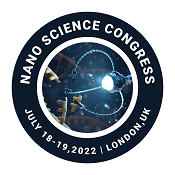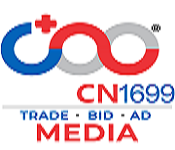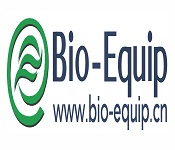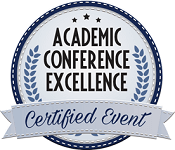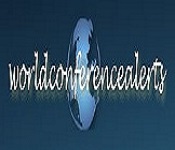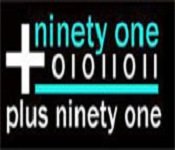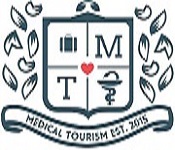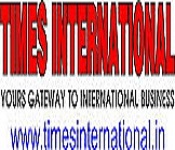Sessions& Tracks
Track 01: Life science and Nano medicine
Nanotechnology is defined as the creation, development, and implementation of materials and technologies with the smallest functional components on a nanoscale size (1 to 100 nm). Biotechnology, on the other hand, is concerned with the metabolic and other physiological changes that occur in biological subjects, such as bacteria. These microbial processes have opened up new opportunities to investigate novel applications, such as the biosynthesis of metal nanomaterials, implying that these two technologies (i.e., nanobiotechnology) can play a critical role in the development and implementation of a wide range of useful tools in the study of life. Nanotechnology encompasses a wide range of activities, from extending traditional device physics to wholly new ways based on molecular self-assembly, from inventing new nanoscale materials to researching if we can directly manipulate matter on/in the nanoscale.
Nanowires- The nano sized sensor wires or nanowires are strung over a microfluidic channel. When particles move through this channel, the sensors on the nanowires detect the particles' unique molecular signatures. This data is then promptly transferred to the researcher via an electrode system. They look for cancer-related genes that have been altered. This also aids in pinpointing the exact location of the adjustments.
Cantilevers- These are beams that have been coated with molecules that can bind to certain substrates. Single molecules of DNA or protein can be detected by such micron-sized instruments. The antibodies attached to the surface of the cantilever fingers selectively mix with the proteinaceous molecular products released by cancer cells. These antibodies were created in such a way that they can detect one or more unique molecular expressions in a cancer cell.
Track 02: Scanning Probe Microscopy
Scanning probe microscopy (SPM) is a type of microscopy that creates images of surfaces by scanning the specimen with a physical probe. With the invention of the scanning tunnelling microscope, a tool for imaging surfaces at the atomic level, SPM was formed in 1981. Gerd Binnig and Heinrich Rohrer performed the first successful scanning tunnelling microscope experiment. The use of a feedback loop to manage the gap distance between the sample and the probe was crucial to their success.
-
Scanning probe microscopes enable high image magnification for observation of three-dimensionally formed specimens, providing researchers with imaging capabilities for the future.
-
When specimens are stimulated or handled, this results in enhanced photos as well as specimen qualities, responsiveness, and reaction or non-action.
-
The capacity to monitor a specimen in three dimensions in real time, as well as manipulate specimens using an electrical current and a physical interaction utilising the probe's tip, has enormous research potential.
Track 03: Organic & Inorganic Nano Composite.
For a long time, organic/inorganic composite materials have been widely investigated. Nanocomposites are formed when inorganic phases in organic/inorganic composites reach nanoscale. Organic polymer composites with inorganic nanoscale building components are known as organic/inorganic nanocomposites. They combine the benefits of inorganic materials (such as rigidity and thermal stability) with the benefits of organic polymers (eg, flexibility, dielectric, ductility, and processability). Furthermore, they frequently include nanofillers with unique features, resulting in materials with enhanced qualities. The tiny size of the fillers in polymer nanocomposites results in a substantial increase in interfacial area when compared to standard composites. Even with low loadings, this interfacial region produces a large volume proportion of interfacial polymer with characteristics distinct from the bulk polymer.
-
A polymer blend is a mixture of two or more polymers that have been combined to form a new material with distinct physical properties. Polymer mixing has received a lot of interest as a simple and cost-effective way to generate polymeric materials with a wide range of commercial uses. In other words, by correctly selecting the component polymers, the properties of the blends can be changed according to their eventual application.
-
Polymer blends are categorised as either homogeneous (molecularly miscible) or heterogeneous (immiscible) in general. Miscible blends include poly(styrene) (PS)–poly(phenylene oxide) and poly(styrene-acrylonitrile)–poly(methyl methacrylate) (PMMA), whereas immiscible blends include poly(propylene) (PP)–PS and PP–poly(ethylene) (PE). Miscible (single-phase) blends are usually optically clear and homogenous down to the segmental level of the polymer.
-
Fillers are commonly employed to improve the mechanical, thermal, barrier, and fire-retardant properties of polymers, and polymer/nanocomposites based on nanoclays have received interest due to their capacity to increase the mechanical, thermal, barrier, and fire-retardant properties of polymers. Nanosized fillers have been used for a variety of purposes, from photocatalyst activation and conductivity to improving melting processability and moisture barrier characteristics. Nanoparticles have unique features due to their small size and high relative surface area-to-volume ratio.
Track 04: Nano Fabrication
The word "nanofabrication" refers to the manufacture of objects with a nanoscale scale. Fabrication is a phrase adopted from macro engineering to describe the process of designing bridges, ships, and complicated structures, pre-shaping materials with the appropriate qualities, and assembling subcomponents to make a final product. Fabrication is a term used in the microelectronics industry to describe the process of creating sophisticated, highly integrated circuits. It's a method of selecting materials with the appropriate qualities, depositing them, and patterning them in a series of processes to make an integrated circuit. Fabrication, then, refers to a set of techniques and actions used to create distinct artefacts or devices out of raw materials.
Nanofabrication, on the other hand, necessitates the use of novel material patterning techniques in order to create functional structures. A lithographic approach usually consists of the following components (Geissler and Xia, 2004):
-
A mask or master that contains a pre-designed set of patterns
-
Utility for facilitating pattern transmission and repetition
-
A usable material that can be used as a resist in following procedures
Track 05: Nano medicine, Nano drug delivery system and Bio pharmaceuticals
Nanomedicine and nano delivery systems are a relatively new but quickly emerging field in which tiny materials are used as diagnostic tools or to administer therapeutic medicines to specific targets in a controlled manner. Nanotechnology provides a number of advantages in the treatment of chronic human diseases by allowing precise medicines to be delivered to specified locations. There have been several notable applications of nanomedicine (chemotherapeutic agents, biological agents, immunotherapeutic agents, and so on) in the treatment of various diseases in recent years. The current study provides an updated overview of recent achievements in the field of nanomedicines and nano-based drug delivery systems by examining the discovery and application of nanomaterials in increasing the efficacy of both new and existing pharmaceuticals (e.g., natural products).
Track 06: Functions of Nano particles & Nano materials
Due to their unique magnetic and mechanical properties, as well as specific characteristics such as heat, melting point, and surface area, biomedical applications of green synthesised metallic nanoparticles have the most significant advantage nowadays, making them suitable for biomedical applications such as imaging, gene targeting, drug delivery, and biosensor development. To be effective drug carriers, nanoparticles must possess certain characteristics, such as magnetic properties. Their capacity to function at the cellular and molecular levels of biological interactions makes nanoparticles good agents for improving contrast in magnetic resonance imaging (MRI). Nanotechnology has improved the features and designs of magnetic nanoparticles for biomedical applications, specifically the key requirements and properties of magnetic nanoparticles (MNPs). With greater magnetic moments, magnetic nanoparticles with magnetic characteristics were utilised.
Track 07: Nanotech initiatives in state, regions and International arena
The National Nanotechnology Initiative (NNI) involves, impacts, and interacts with various stakeholder groups inside and outside the federal government as it works toward its goals and addresses national needs. The various and intricate relationships between NNI stakeholders are critical to the President's Strategy for American Innovation1's success in developing future employment and industries based on scientific breakthroughs, innovation-based economic development, and a world-class workforce. Each stakeholder group plays a vital role in the nanotechnology "innovation ecosystem," and their success is critical to the realisation of nanotechnology advantages in general and the NNI's success in particular. Many nonfederal stakeholders are supported by the participating NNI federal agencies, although the support is not unidirectional. It is possible to make significant progress.
The following text explains the duties and responsibilities of various federal and nonfederal stakeholders, as well as where partnerships and collaborations can (and do) occur.
The NNI's stakeholders include:
• Independent researchers,
• Research groups, institutes, and centres, to name a few.
• Small-scale enterprises
• Large corporations,
• Contract research laboratories,
• Colleges and universities
Track 08: Nanoscale Genomics
In biotechnology and medicine, bacterial adherence to inorganic/nanoengineered surfaces is a critical issue because it is one of the first steps in determining a general pathogenic event. Understanding the molecular principles of bacteria-surface interaction is a key step toward developing a new generation of gadgets that are universally certified antibacterial. We illustrate how bacterial behaviour is influenced by highly regulated nanostructured substrates in terms of morphological, genomic, and proteomic responses. Fimbriae often disappear in Escherichia coli adherent to nanostructured substrates, as contrast to bacteria clinging to reference glass or flat gold surfaces, as demonstrated by atomic force microscopy (AFM) and scanning electron microscopy (SEM).
Real-time qPCR consistently identified a genetic difference in the fimbrial operon regulation in bacteria interacting with nanorough substrates. We investigated the entire proteomic profile of E. coli using 2D-DIGE to gain a better understanding of the molecular basis of the interaction mechanisms. We discovered significant changes in the bacteria adherent to the nanorough substrates, such as regulation of proteins involved in stress processes and defence mechanisms. We showed that a pure physical stimulus, such as a nanoscale alteration in surface topography, can have a considerable impact on the morphological, genetic, and proteomic profile of bacteria. These findings show that in-depth research into the molecular processes of microbes sticking to surfaces is critical for product development.
Track 09: Molecular Nanoscience and nanotechnology
Molecular nanotechnology would use original definitive methods to acquire definitive outcomes, whereas conventional chemistry uses inexact processes to obtain inexact results and biology employs inexact processes to obtain definitive results. In molecular nanotechnology, the goal is to balance molecular processes in positionally controlled locations and orientations to achieve desired chemical reactions, and then to build systems by assembling the reactions' products.
A broad-based technological project led by Battelle (the manager of multiple US national laboratories) and the Foresight Institute aims to provide a roadmap for MNT development. The Nanofactory Collaboration is a more focused continuing endeavour with 23 researchers from ten organisations and four countries who are building a practical research programme focusing on positionally controlled diamond mechanosynthesis and other related topics.
Track 10: Nanotechnology in Structural body
Nanotechnologists have gotten active in regenerative medicine through the development of biomaterials and nanostructures with clinical potential. Their goal is to construct systems that can replicate, reinforce, or even create tissue restoration strategies in vivo. In reality, significant progress in the fields of tissue engineering, cell treatment, and cell transport has already been made in the recent decade. In this review, we'll look at the most recent research findings and consider if cell and/or tissue restoration devices are a viable option. This study, which focuses on the use of nanotechnology in tissue engineering research, emphasises current advancements in the use of nano-engineered scaffolds to replace or restore the following tissues: I skin; (ii) cartilage; (iii) bone; (iv) nerve; and (v) cardiac
Tissue engineering, as an alternative to organ transplantation, is currently showing significant promise, as evidenced by first-in-man successful stories of tissue engineered implants.
-
This interdisciplinary science's ultimate goal is to create objects that I imitate natural tissue features
-
temporarily substitute tissue functions
-
serve as a guide for tissue ingrowths
-
serve as a guide for tissue ingrowths.
Track 11: Nano materials in food, agriculture and water purification
Nanomaterials have become more important in the agri-food business, particularly in preservation and packaging, due to their small size and unique physico-chemical properties. Shelf life, food quality, safety, fortification, and biosensors for contaminated or ruined food, irrigating water, and drinking water will be the focus of future applications. Various forms and shapes of nanomaterials are utilised in agriculture and water quality management, depending on the needs and nature of the activity. In this article, we look at how nanotechnology is used in agriculture.
The following are the main points discussed:
-
Agriculture and water quality management using nanomaterials.
-
Nanoscale carriers, fabricated xylem vessels, nanolignocellulosic materials, clay nanotubes, photocatalysis, bioremediation of pesticide resistance, disinfectants, agricultural wastewater treatment, nanobarcode technology, quantum dots for staining bacteria, and nanobiosensors are some of his research interests.
-
Nanoscience and Nanolignodynamic metallic particles, photocatalysis, desalination, heavy metal removal, and wireless nanosensors are some of the agricultural uses.
Track 12: Nano electronics and nano sensors
Nanomaterials are becoming increasingly important in the development of new gadgets. Nanomaterials have distinct properties that set them apart from their bulk counterparts. These distinct properties form the foundation for revolutionary nanoelectronics, nanosensors, and nanodevices that can transcend the constraints of current devices.
The section "Nanoelectronics, Nanosensors, and Devices" provides a venue for the quick publication of work reports on the synthesis, characterization, and application of nanomaterials in diverse nanoelectronics and nanodevices. By utilising the concept of nanoelectronics and nanodevices, the scope of Nanoelectronics,
Nanosensors, and Devices includes, but is not limited to, various applications in electronics, sensors, and other devices, such as actuators, soft robotics, wearable electronics, flexible/stretchable electronics, energy generation and storage devices, displays, and shape memory polymers. Experimental and theoretical research, as well as novel characterization methods, will also be discussed. All manuscripts submitted to this section will go through a thorough peer-review procedure, with decisions made based on the recommendations of independent reviewers.
Track 13: Molecular Engineering
Molecular engineering is a new branch of research that focuses on designing and testing molecular properties, behaviour, and interactions in order to create better materials, systems, and processes for specific purposes. This approach falls under the broader concept of "bottom-up" design, in which observable aspects of a macroscopic system are altered by direct changing of a molecular structure.
Chemical engineering, materials science, bioengineering, electrical engineering, physics, mechanical engineering, and chemistry are all components of molecular engineering. In that both are concerned with the behaviour of materials on the scale of nanometers or smaller, there is also a lot of overlap with nanotechnology. Because molecular interactions are so fundamental, there are a plethora of potential application areas, limited only by one's creativity and the laws of physics. Some of molecular engineering's early triumphs, however, have been in the domains of immunotherapy, synthetic biology, and printable electronics.








